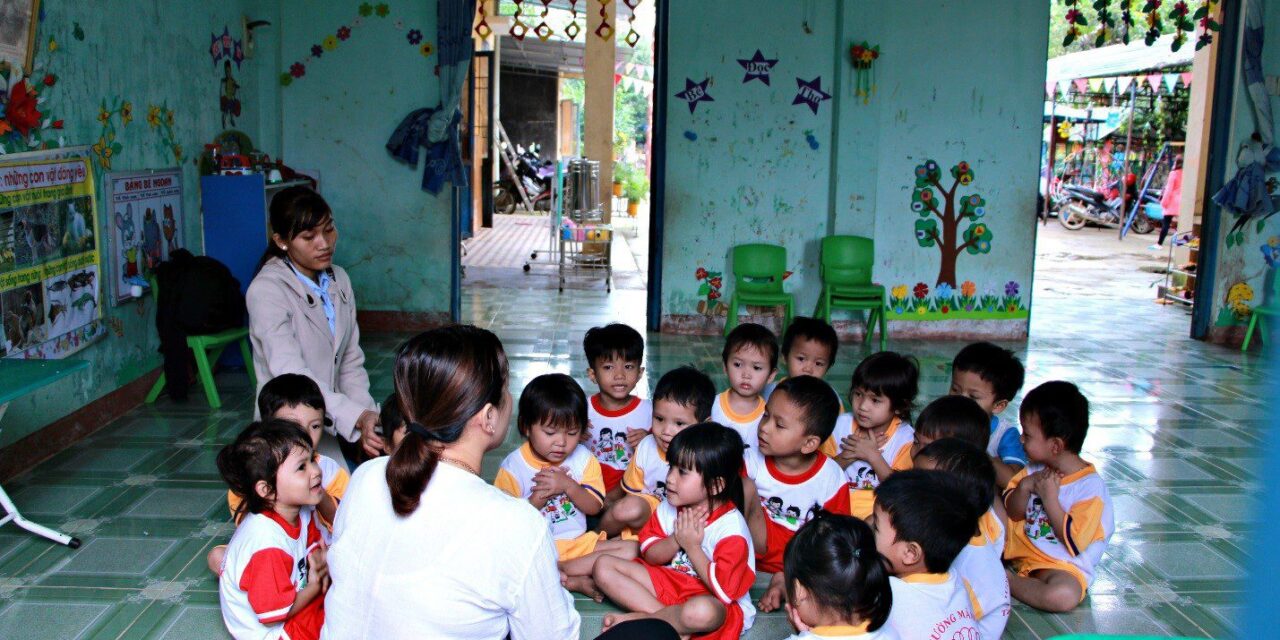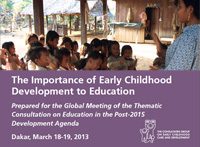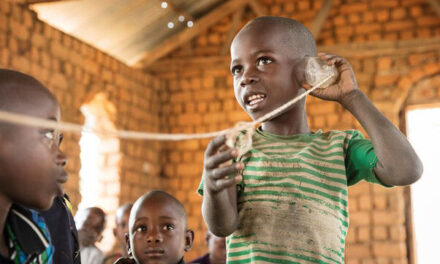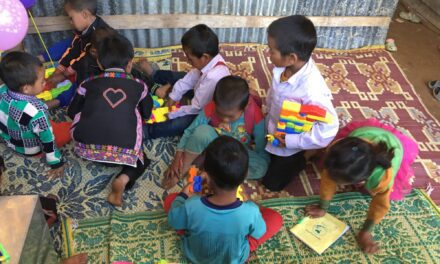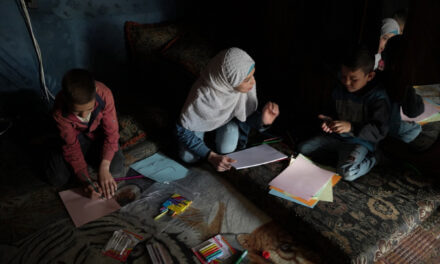This blog was written by Anna Murru, Adèle Dachy and Filip Lenaerts, VVOB
How can a pre-school teacher make sure that all children in the class are learning? At first glance, it may seem that all pupils are learning… But by observing each one of them in a more systematic way, teachers can determine who is really engaged in deep learning[1], who is not, and who is at risk of not learning. In Vietnam, the Ministry of Education and Training aims for a more child-centered preschool education. With the support of VVOB, the Departments of Education and Training of three provinces of Central Vietnam implement an innovative approach based on child observation.
Focus: from access to quality
Over the past ten years, the Government of Vietnam has been very active in guaranteeing all children access to at least one year of pre-school education. More recently, the emphasis has been on the quality of the education provided.
Based on the results of a pilot research project conducted by VVOB and the Vietnam Ministry of Education in 2016, a process-oriented child monitoring approach proved to be effective and relevant to the context of Vietnamese preschools. The approach entails the observation of children in their class, and through a class screening, teachers rate the levels of well-being and of involvement of the children. Through these process indicators[2], teachers are able to evaluate to what extent children are actually benefiting from their teaching activities. In other words, to what extent they are learning at deep level[3] and developing[4]. Based on the results of the observations, teachers can then adjust the environment, materials, activities and interactions and put in place actions to cater for the gaps identified.
Monitoring the learning of 519 children of Northern and Central Vietnam
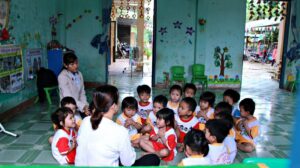 The pilot research was carried out from December 2015 to June 2016 in 16 classes of 8 pre-schools in 3 ethnically diverse districts of Northern and Central Vietnam[5]. Those schools were selected based on the ethnic diversity of their student populations. The 519 children belong to 14 different ethnic groups, including Kinh (231), Co Tu (137), Tay (65), H’Mong (37) and others (49). They were enrolled in main or satellite classes[6], single or multi-age classes[7]. Eight pre-school leaders and 8 senior teachers took part in the research and created an enabling environment[8] for the 32 teachers to try out the new approach. The teachers were also supported by 8 lecturers of Teachers Training Institutes (TTI) and 4 provincial and district education officers.
The pilot research was carried out from December 2015 to June 2016 in 16 classes of 8 pre-schools in 3 ethnically diverse districts of Northern and Central Vietnam[5]. Those schools were selected based on the ethnic diversity of their student populations. The 519 children belong to 14 different ethnic groups, including Kinh (231), Co Tu (137), Tay (65), H’Mong (37) and others (49). They were enrolled in main or satellite classes[6], single or multi-age classes[7]. Eight pre-school leaders and 8 senior teachers took part in the research and created an enabling environment[8] for the 32 teachers to try out the new approach. The teachers were also supported by 8 lecturers of Teachers Training Institutes (TTI) and 4 provincial and district education officers.
Teachers as reflective practitioners towards inclusive education
Over 6 months, teachers, school leaders, lecturers and educational officers together implemented the pilot research.
In an initial training, they learnt about child observation and developed a class screening plan. Based on this, they carried out their first class screening[9], scoring children’s levels of well-being and involvement. In a second training, teachers were guided to categorise children’s learning (Green: doing well in the setting; Orange: at risk of not learning and requiring attention; Red: concern for learning and requiring immediate action).
Based on their findings and on the needs and interests of the children, they explored the actions they could take to mitigate children’s barriers to learning and participation and developed actions to implement in their classes. After discussing the results of a second classroom screening with their peers in a workshop setting, teachers came up with adjusted plans, including a variety of actions to create a supportive environment for children’s development and learning.
As a result of the implementation of this approach, the levels of well-being and involvement increased for most children. In fact, between the first screening in January and the final one in May, teachers reported that the levels of well-being and involvement increased for 71% of the observed children. For 27%, the scores remained the same, and they decreased for 2%. In January, only 1 out of 4 children were “doing well” (green group). By May, the green group increased to 2 out of 3 [10].
Findings from national data[11], point to gender and ethnic disparities in learning among children in Vietnam. Notably, the action led to increased levels of well-being and involvement across all groups regardless of gender and ethnicity.
Long-lasting changes and extended support
Teachers and school leaders who took part to this pilot research expressed their motivation and commitment to continue using the approach. District and provincial education officers have continued to gradually spread the process-oriented child-monitoring approach that they consider a practical and tangible foundation for enhancing children’s learning.
Over the next four years (2018-2021), VVOB will support the Departments of Education and Training of 3 provinces of Central Vietnam to introduce this approach to 3,400 preschool teachers and 570 preschool leaders. They will reach 62,000 children (65% of ethnic minorities) in 22 disadvantaged, ethnically diverse districts. In addition to the results of the class screenings, research will be conducted to track the impact on the holistic development of these children.
[1] The child’s brain works at its full potential and he/she reaches a deep level of learning. Such type of learning is opposed to superficial learning and allows the child to transfer the skills he/she learned in another real life practical situation.
[2] Levels of well-being and levels of involvement
[3] Ibidem note 1.
[4] Developing in all developmental areas: cognitive, social and emotional, communication and language, fine and gross motor skills.
[5] Thai Nguyen City and Vo Nhai districts in Thai Nguyen Province, and Nam Giang district in Quang Nam province.
[6] Satellite classes are classes situated outside the main school building, usually in more remote villages and communities.
[7] In multi-age classes, children of different ages are together in one class.
[8] Through collaboration, encouragement, support and participation, school leaders, senior teachers and peer teachers become an enabling environment for preschool teachers to develop and try out new ideas in the class.
[9] The screenings were done for 513 out of 519 children because 6 children were temporarily absent or changed school.
[10] The pilot research findings have been published in the International Journal on Early Childhood: https://link.springer.com/article/10.1007/s13158-017-0188-2
[11] Ministry of Education and Training (2013). Early Development Instrument (EDI) in Vietnam 2013. Hanoi: Golden Sky; and General Statistics Office (2011). Education in Vietnam: An analysis of key indicators.

